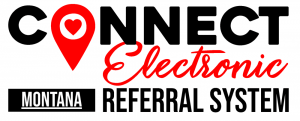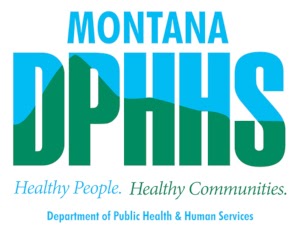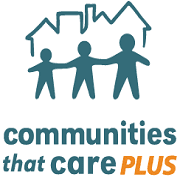Images
Image
“CONNECT”ing in Lincoln County

As part of the PFS grant, we are supporting and recruiting for CONNECT. CONNECT is a free referral system for service providers in Montana. A provider would be anyone that offers a necessary support service to families, children, or adults. The network allows information or referrals to be shared between service providers. This information DOES NOT include patient files. The goal of CONNECT is to reduce common barriers for external referrals and increase client uptake services. It reduces duplication of services and has an easily trackable history and documentation of patient contact and progress.
In Lincoln County, we had a kickoff event on February 28th. There were 20 people that showed up; we also had a joint virtual presentation 2 other days, where approximately 8 people from Lincoln and Sanders Counties attended online. Attendees were given a history of CONNECT, a success story of Lincoln County, and a demonstration on the system. People were also able to suggest others for us to contact; these are businesses, agencies, and people they provide referrals to or receive referrals from.
The Cardiac Unit at Cabinet Peaks Medical Center (CPMC) stated they were not receiving all of the referrals from Kalispell Regional Hospital (KRH). Lincoln County residents are commonly sent to KRH for heart attacks and surgeries. Since joining CONNECT, the hospital stated they are receiving over 85% referral rate. Referrals were getting lost in being sent to wrong number, faxed to number no longer in service, and just a loss of referral somewhere in the system. Now, they are sent to “gate keepers” who reply back to KRH that they received the referral, the patient has/had been contacted, and that they are receiving services. (Cardiac and diabetes programs are required by grants that they receive to take part in CONNECT.)
Agencies are also able to do some customizing of their referral to meet the needs of their organization. They are able to put in their profile if they accept certain insurances, ages, and what services they do provide. An organization is also able to print or look at reports such as referral delays to an agency, number of referrals, and referral outcomes.
Like Parenting Montana, CONNECT can be a great tool to break the ice with agencies you may not have thought of or are having a hard time breaking through to. In Lincoln County, I have spoken to realtors, the mortuary, drug court, Adult Protective Services, day care centers, and service organizations to name a few. I am planning on having 2 booths at the upcoming health fair; Parenting Montana and CONNECT. Schools, medical providers, social service agencies, law enforcement, churches, and nursing homes are also good agencies to approach.
Even if your grant does not have CONNECT in your strategies, you can still be a great ambassador for CONNECT! Attend a training to familiarize yourself, go online and educate yourself, and let your county CONNECT leader some organizations to contact! This is a great resource and tool for Montana! It links the community to services!
For more information:
[email protected] for someone from the State of Montana team.
Native Hope Being Implemented on Fort Peck Reservation

Native HOPE is an evidence-based practice for Native American and American Indian populations, and has been implemented on the Fort Peck Reservation in the towns of Brockton, Frazer, Poplar and Wolf Point over the past several years. One of the tenets of the program is continuing what the students learn out into the community, to help hold each other accountable and be good examples to one another, and to help empower the adults who take care of them to be more involved.
In December there was a community-wide Native HOPE event that involved the youth and their parents, caregivers and those in a parenting role. To put the skills they learned to use, Ernie Bighorn, PS for BG and PFS for Fort Peck Tribal Health, along with the PFS Roosevelt Prevention Specialist Ashley Toavs, helped purchase supplies for a youth basketball league for the students. This league is completely run by the parents, caregivers and those in a parenting role. They plan the schedule, set up teams, coaches and practices, and plan trips to nearby towns for the kids to participate in tournaments. The Prevention Specialists role was to purchase jerseys, basketballs, travel expenditures and team entrance fees for the out-of-town tournaments. At the first practice, there were 100 youth who showed up to be involved in this league!!! Nike has even reached out to see if they can provide shoes for a portion of the youth in the league! This is a prime example of prevention specialists coordinating in several ways:
- Collaboration for a project between both Block and PFS grants, as well as between county and reservation grants.
- Leveraging multiple strategies together to create successful outcomes.
Gina Tracy joins BHDD as PFS Grant Manager

My name is Gina Tracy and I gratefully accepted the Partnership for Success Grant Manager position in the Addictive and Mental Disorders Division (BHDD) within the Department of Health and Human Services (DPHHS). I previously worked as a Prevention Specialist, and before that, I worked with a few nonprofit organizations and in the Quality Improvement Department at the Montana State Hospital. Overall, I have been working in the public sector for nearly ten years. I earned my Master of Public Administration degree from the U of M in 2017 because I care about working for the public interest rather than working towards a profit margin in the private sector. I have experience with grant management, public budgeting, strategic planning, and meeting regulations mandated from state and federal funding sources, which will be helpful in my new position as the PFS Grant Manager. I am also passionate about prevention, because I understand the many issues related to substance use/misuse. I know, first hand, how important a Prevention Specialist’s work is in the community, and I am honored to be a supportive role in the prevention process.
I am from Anaconda, MT but live in Helena, and I am part of a beautifully blended family. My husband and I have four children ranging from 9 years old, to 15 years old. Both my husband’s and my ancestors migrated to Montana from Ireland slightly before and after the Easter Rising, so we share some common preferences. We mostly support the children in their extra curricular activities, but we also enjoy outdoor activities, treasure hunting, gold panning, and simply spending quality time together. We are always up for an adventure, whether it be looking for lost Montana gold, or hiking new terrain to catch mountain lake trout.





